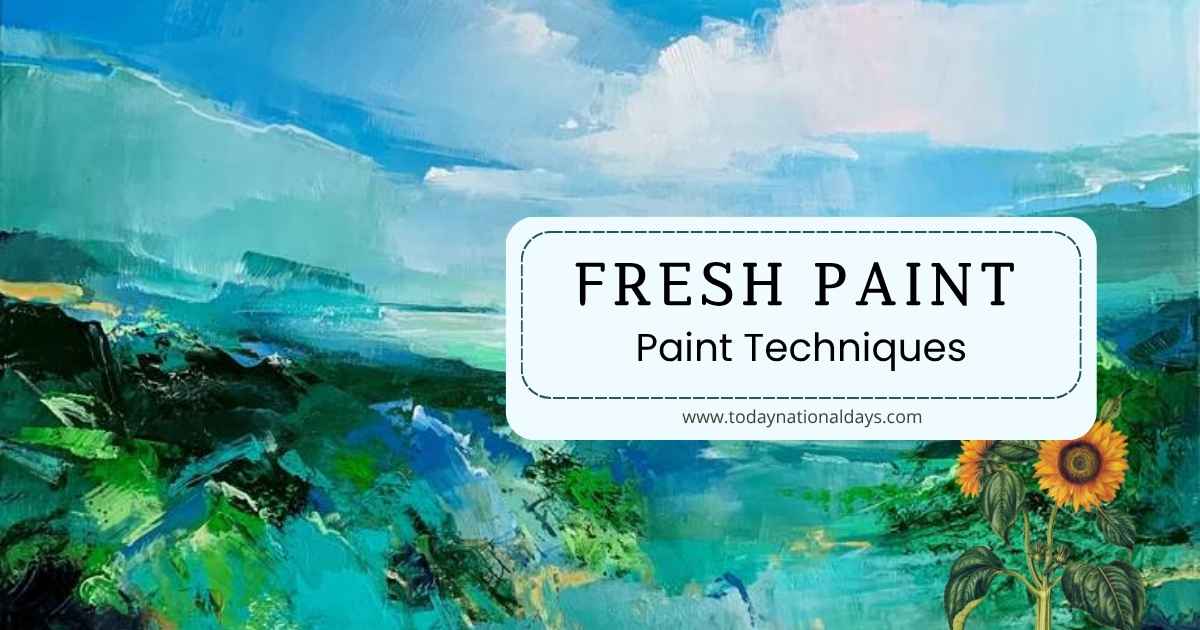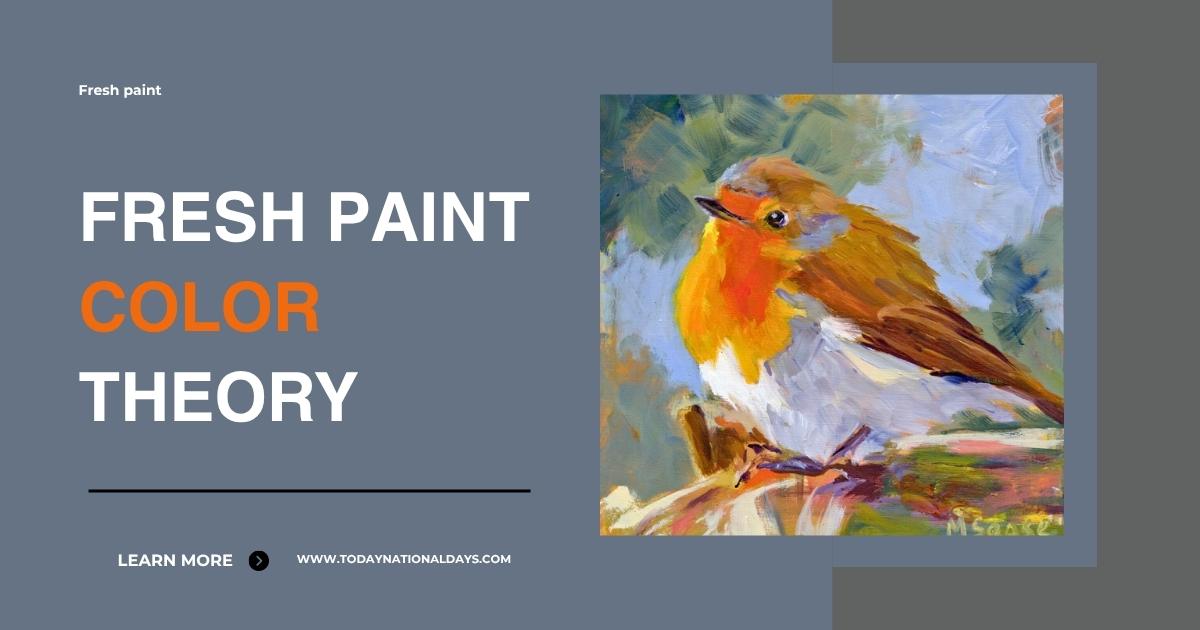
Fresh paint serves as a crucial medium for artists, designers, and hobbyists seeking to create expressive and visually striking work. Whether you’re working on canvas, murals, or digital platforms, using fresh paint ensures vibrant results and responsive textures that allow immediate manipulation. In creative circles across countries like the USA, fresh paint continues to symbolize raw inspiration, artistic control, and an evolving process.
This comprehensive guide is tailored for visual artists, educators, students, and creators who want in-depth insights on working with fresh paint effectively. You’ll find real techniques, trusted tools, and examples designed to help you achieve confident brushwork and strong visual outcomes. This blog avoids overused phrases and brings clarity to a timeless artistic practice.
Top Types of Fresh Paint Used in Art Studios
Choosing the right kind of fresh paint is critical to your work’s durability, color vibrancy, and technique. Below is a breakdown of the most commonly used types in modern art settings.
1. Acrylic Paint
- Dries quickly, making it ideal for layering techniques.
- Water-based but becomes water-resistant once dry.
- Excellent for both canvas and mixed media projects.
2. Oil Paint
- Known for its slow drying time, allowing smooth blending.
- Rich pigmentation and texture, preferred by fine artists.
- Requires proper ventilation and cleanup using solvents.
3. Watercolor Paint
- Transparent and fluid, ideal for soft washes and subtle effects.
- Works best on specially textured paper.
- Blends well but is less forgiving for corrections.
Each paint type affects the final look and process of a piece. Artists often select materials based on drying time, color intensity, and compatibility with other media.
Comparison of Fresh Paint Types for Artists
| Paint Type | Drying Time | Surface Compatibility | Opacity Level | Cleaning Method | Common Uses |
|---|---|---|---|---|---|
| Acrylic | Fast (minutes) | Canvas, wood, paper | Opaque or semi | Soap and water | Mixed media, abstract |
| Oil | Slow (days) | Canvas, primed boards | Highly opaque | Turpentine or solvents | Portrait, realism |
| Watercolor | Fast (seconds) | Watercolor paper | Transparent | Soap and water | Nature, landscape art |
| Gouache | Moderate | Paper, board | Matte and opaque | Soap and water | Illustration, posters |
| Tempera | Very fast | Paper, wood | Opaque | Soap and water | Children’s projects |
This chart helps beginners and experienced artists decide which fresh paint is best for their artistic goals.
Best Methods for Applying Fresh Paint on Canvas or Paper
Application techniques vary by paint type, but mastering a few key methods can elevate your artistic control and precision. Many artists in Canada utilize these techniques to create gallery-ready work or educational art demonstrations.
Layering and Glazing
- Start with light washes or underpaintings, then build depth through successive layers.
- Acrylic and oil paints are particularly suited for layering.
- Glazing uses diluted paint to subtly shift tones without hiding the layer beneath.
Wet-on-Wet Technique
- Popular with oil and watercolor artists.
- Paint is applied directly over a wet surface to allow spontaneous blending.
- Requires practice to avoid muddy color mixing.
Dry Brush Technique
- Used to create textured effects or scratchy strokes.
- Minimal paint is applied to the brush, dragging across a dry surface.
- Works best with acrylic or oil on textured paper or canvas.
Each technique adds personality and texture to your final piece, allowing the paint to serve more than just color—it becomes part of the visual narrative.
Tools Every Artist Should Use When Working with Fresh Paint
Great tools can drastically improve your control and outcomes. Whether you’re a beginner or a studio professional, having the right set makes a difference.
1. Brushes for Texture and Precision
- Round brushes for details and outlines.
- Flat brushes for large surface coverage and sharp edges.
- Fan brushes for blending or textural effects.
2. Palette Knives and Blades
- Useful for mixing, applying thick layers, or scraping.
- Especially favored in impasto and abstract styles.
3. Support Materials
- Easels: Essential for stability and posture.
- Palettes: Choose wood, plastic, or glass depending on paint type.
- Spray bottles: Help keep acrylics moist during long sessions.
Choosing the right tool depends on your medium, working style, and desired result. Investing in quality materials pays off in the form of smoother workflows and better finishes.
Fresh Paint Color Theory Artists Should Practice

Knowing how fresh paint behaves in mixing can save time and deliver better visual harmony. Instead of relying on trial and error, use color theory as a foundation for more cohesive works.
Primary and Secondary Blending
- Mixing red, blue, and yellow gives you the full color wheel.
- Avoid overmixing, which leads to muddy tones.
- Pre-test new blends on a spare swatch before applying to your artwork.
Warm vs Cool Contrast
- Warm colors (reds, oranges) evoke energy and attention.
- Cool colors (blues, greens) suggest calm and distance.
- Balancing both creates spatial depth and visual rhythm.
Tint, Tone, and Shade
- Tint = color + white
- Shade = color + black
- Tone = color + gray or complement
Mastering these elements allows painters to build mood, emotion, and realistic light interaction in their artworks.
Tips to Extend the Freshness of Paint During Projects
Keeping paint wet is a common challenge, especially with fast-drying materials like acrylic. Artists in Australia often work under hot, dry conditions and use the following tactics to preserve moisture:
- Use Stay-Wet Palettes
These contain a damp sponge and membrane paper that keep paints usable longer. - Mist Regularly
Spray water lightly over your palette to maintain consistency and prevent skinning. - Seal and Cover Between Sessions
Use airtight containers or cling wrap to protect unused paint for short breaks.
These simple methods extend working time and help you maintain flexibility during extended painting sessions.
Best Practices for Cleaning and Storing Paint Supplies
Proper cleaning not only preserves your tools but also ensures consistent application quality over time. Neglecting clean-up can lead to hardened bristles, rusted knives, and contaminated colors.
Brush Cleaning Routine
- Wash immediately with soap and water (for acrylic and watercolor).
- For oils, use solvent followed by soap to remove residue.
- Shape the bristles while wet and dry brushes flat or upright.
Paint Storage
- Seal paint tubes tightly to prevent drying.
- Store paints in a cool, dry place away from direct sunlight.
- Keep oil paints in metal or thick plastic containers to avoid cracking.
Workspace Maintenance
- Wipe palettes after each use with paper towels or a scraping tool.
- Replace water regularly to avoid muddy mixing.
- Use disposable liners in trays to minimize scrubbing.
By adopting these habits, your supplies will stay in good condition and consistently support your creative output.
How Digital Artists Use the Concept of Fresh Paint
While traditional media still thrives, many digital artists have adopted the idea of fresh paint in the virtual world through design software and drawing tablets. Programs like Microsoft’s “Fresh Paint” or Corel Painter simulate real brush dynamics, offering realistic textures that mimic oil, acrylic, and watercolor painting.
Digital platforms give artists a no-mess environment to experiment with layering, blending, and brush types. The benefit is the ability to undo, adjust colors instantly, and save multiple versions—all while staying true to classical painting techniques. Artists in the USA increasingly rely on these tools in educational settings to teach brush control and paint theory before moving to physical media.
This shift proves that fresh paint isn’t limited to tubes and canvases—it’s a concept of immediacy and responsiveness that carries into the digital realm for a new generation of creators.
Key Things Artists Should Avoid with Fresh Paint

When working with fresh paint, certain habits can unintentionally reduce quality or lead to wasted materials. Being mindful of these issues ensures smoother execution and better final results.
- Using Too Much Paint at Once
Overloading your brush can result in drips, blotchy textures, or a lack of fine detail. Light, controlled application gives you more flexibility and accuracy. - Skipping Dry Time Between Layers
Applying new paint too soon can cause colors to mix unintentionally or peel. Respecting proper drying intervals helps preserve contrast and clarity. - Painting in Poor Lighting
Inconsistent or dim lighting can skew your perception of color and value. Daylight or balanced white lighting is best for maintaining accuracy in tones and depth.
By keeping these points in mind, artists can make the most of their fresh paint without compromising on technique, color, or texture.
Conclusion on Using Fresh Paint Effectively in Your Art
Fresh paint is more than just a material—it’s a medium of immediacy, gesture, and vibrant expression. Whether you’re painting a portrait in Canada or building an abstract mural in the USA, working with fresh paint requires skill, preparation, and patience.
From brush types to drying time, every detail contributes to your success as an artist. Use the techniques and tools shared here to improve your workflow, preserve your materials, and most importantly, bring your creative vision to life with confidence and style.
FAQ About Fresh Paint in Art
Q1: How long does fresh paint last on a palette?
Acrylic dries within 10–30 minutes; oils last several days; watercolors can be reactivated with water.
Q2: Can I revive dried paint?
You can revive acrylic only if slightly dry. Fully hardened paint is unusable. Watercolors can often be rehydrated.
Q3: What’s the best surface for fresh paint?
Canvas and watercolor paper are ideal. Use gesso primer for surfaces like wood or cardboard.
Q4: Is it safe to mix paint types?
Avoid mixing different paint bases (e.g., oil and acrylic). It may result in poor adhesion or cracking.
Q5: Are there eco-friendly fresh paint options?
Yes, several brands now offer water-based, low-VOC paints that reduce environmental and health risks.






